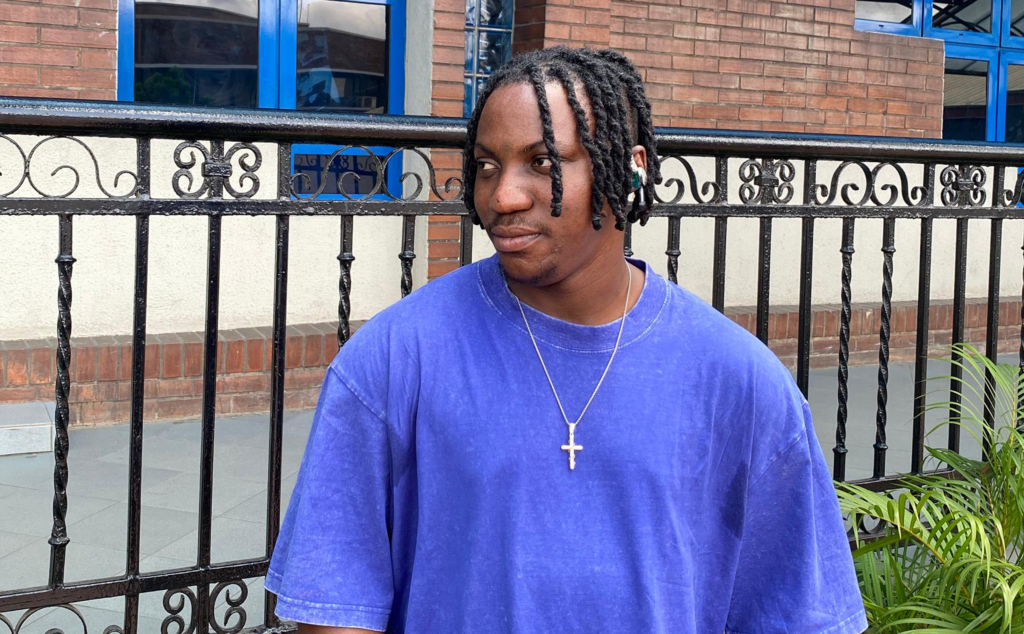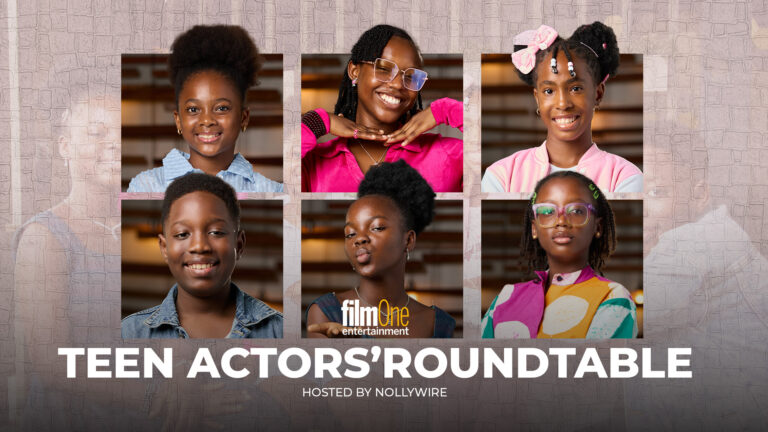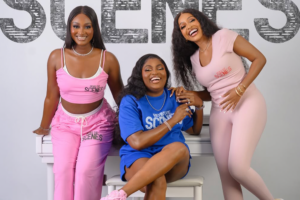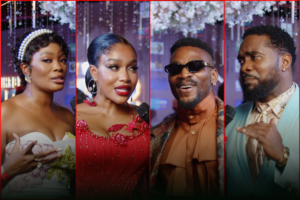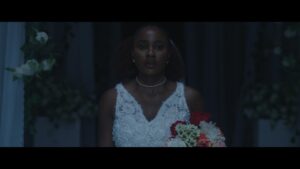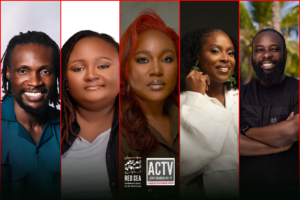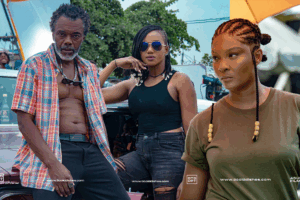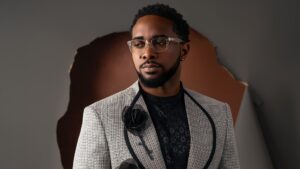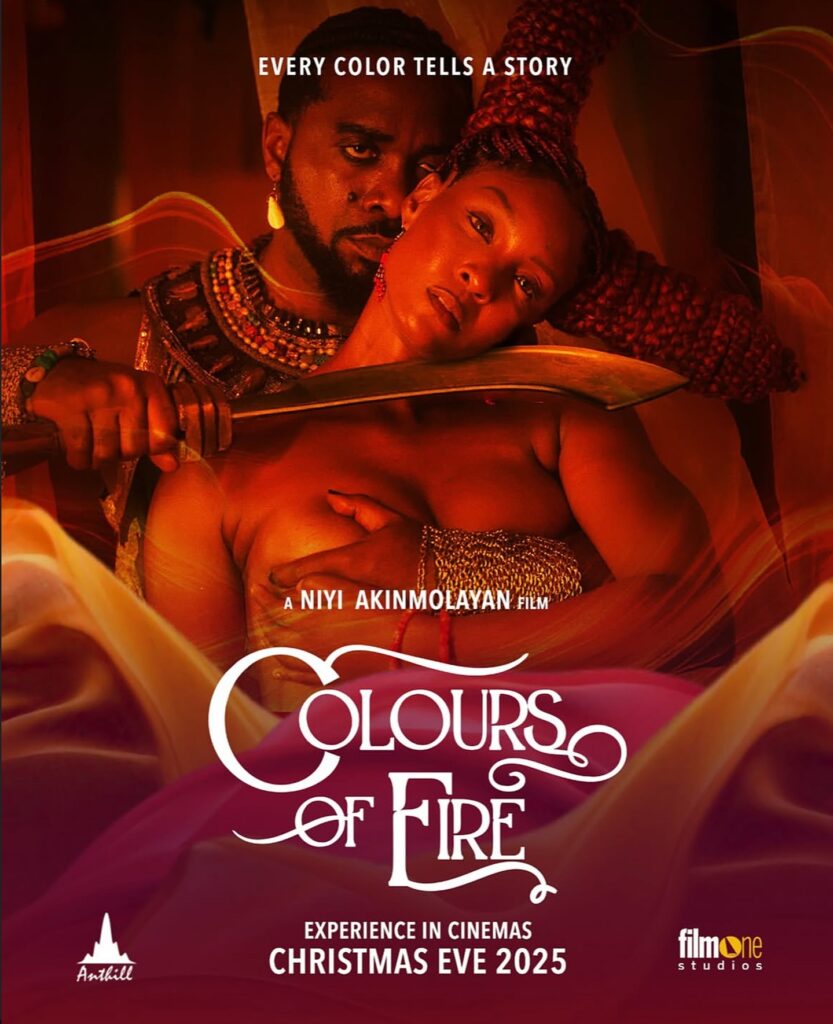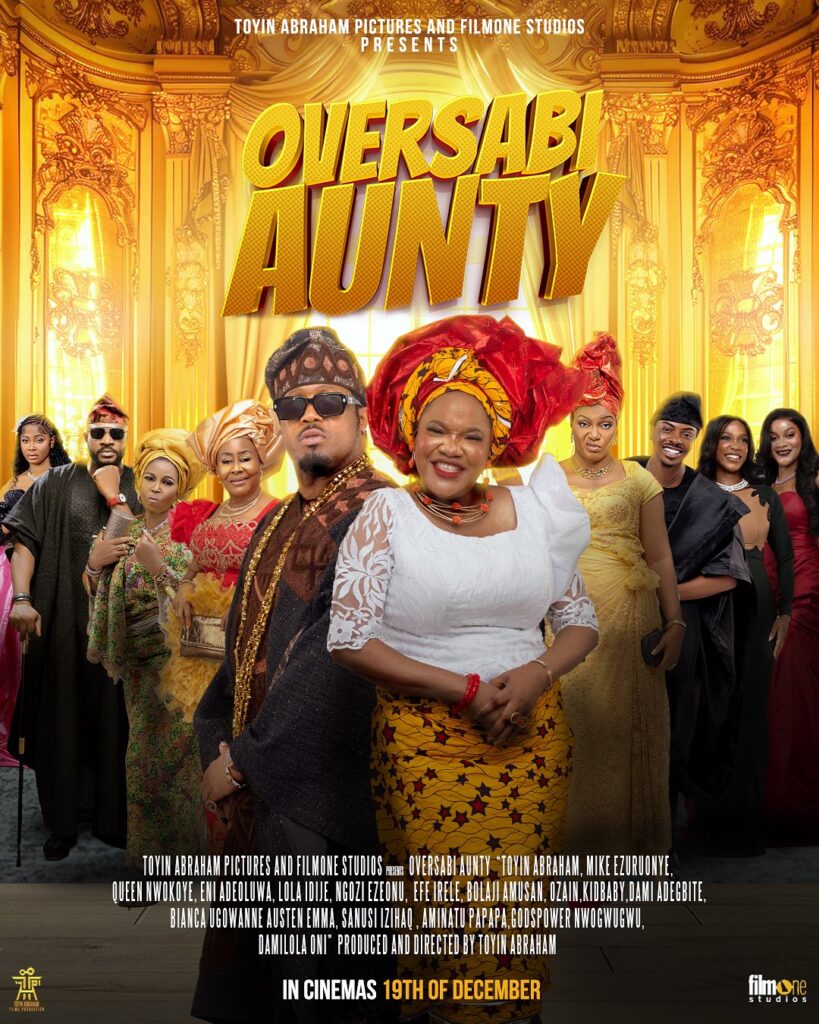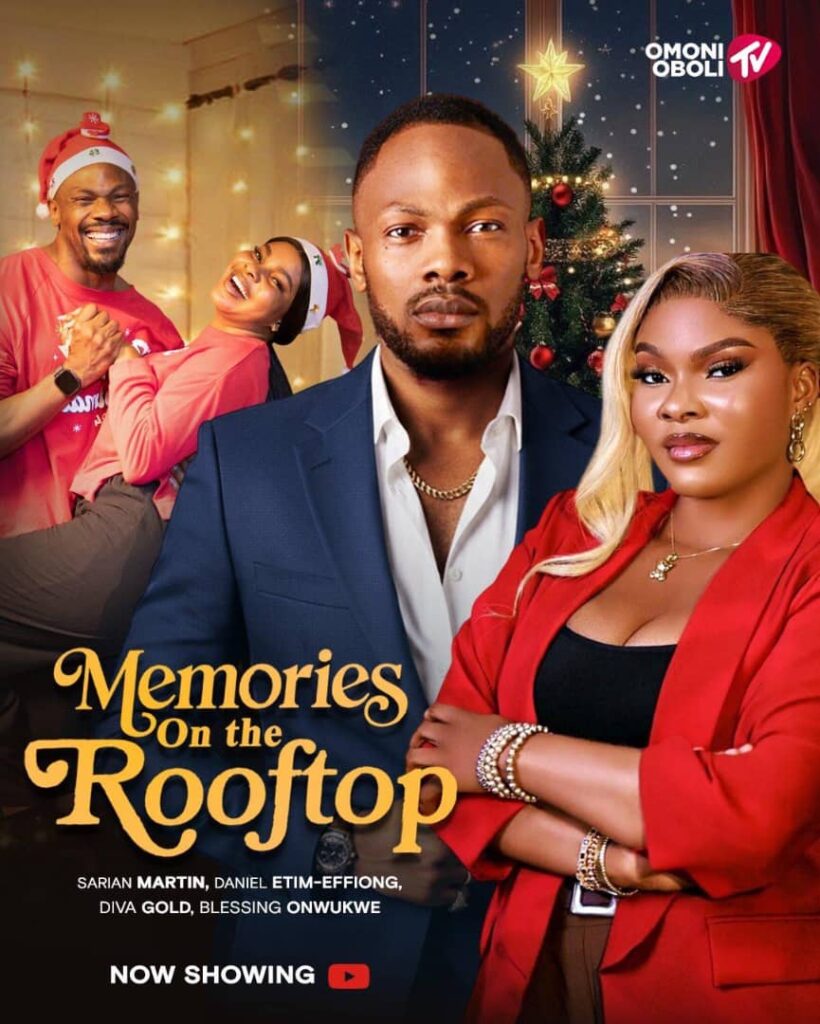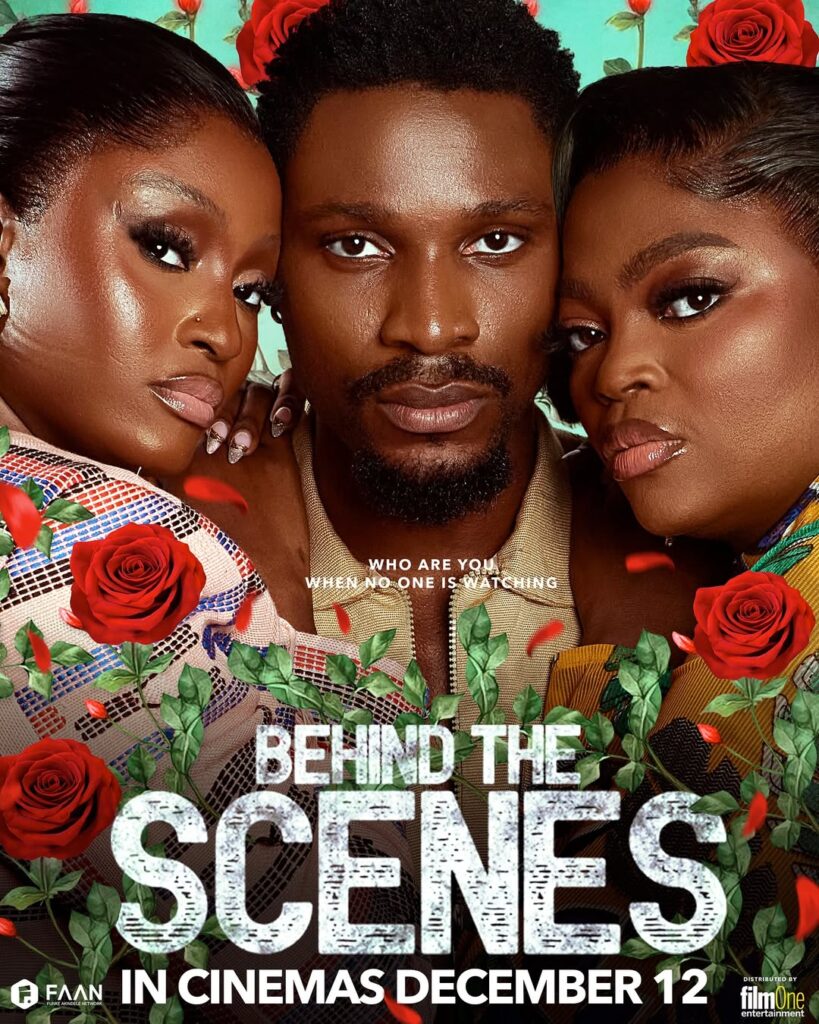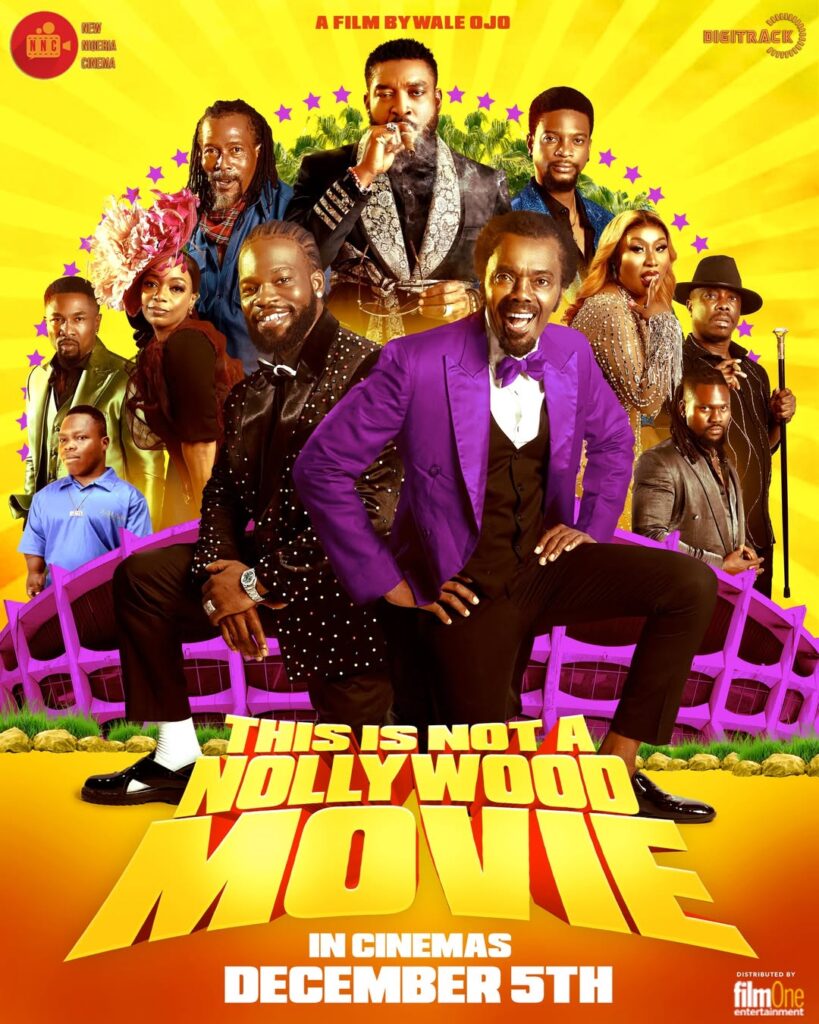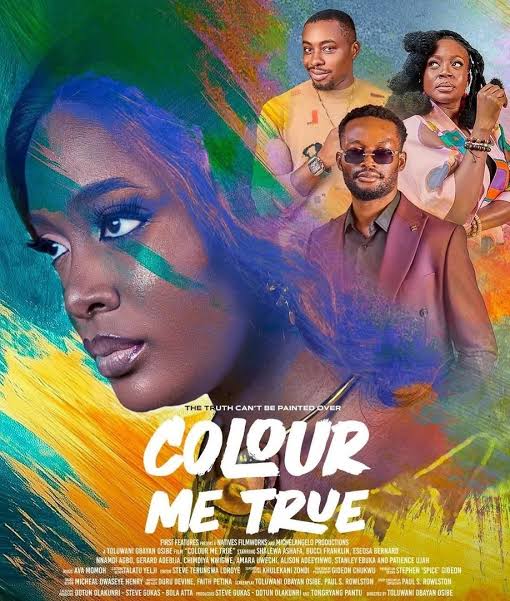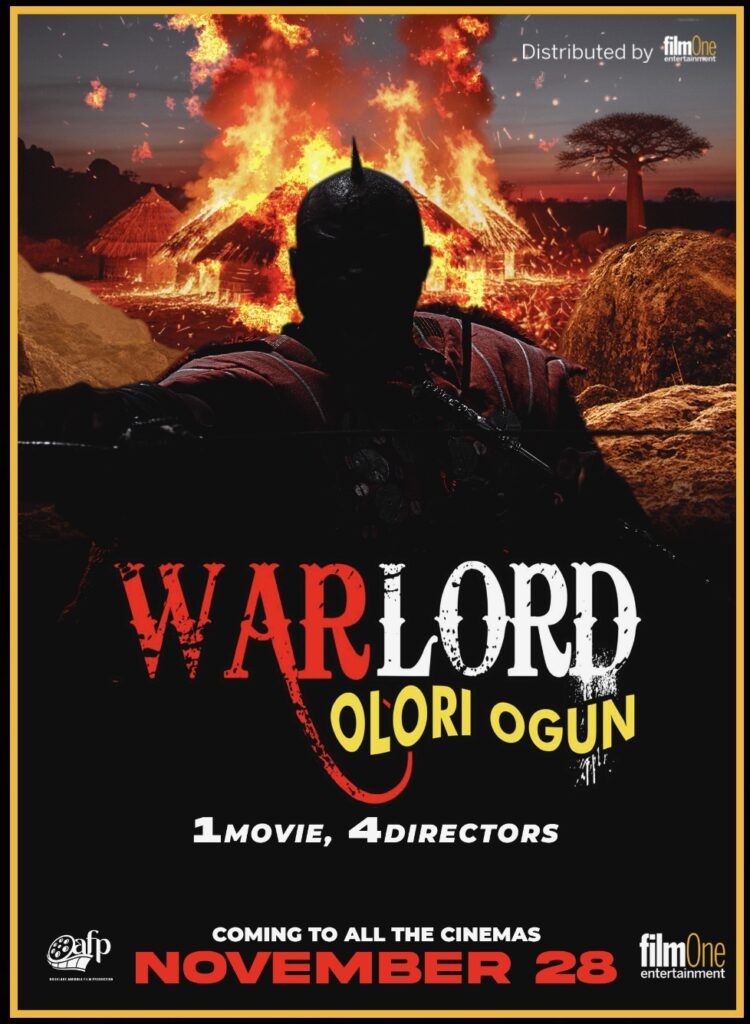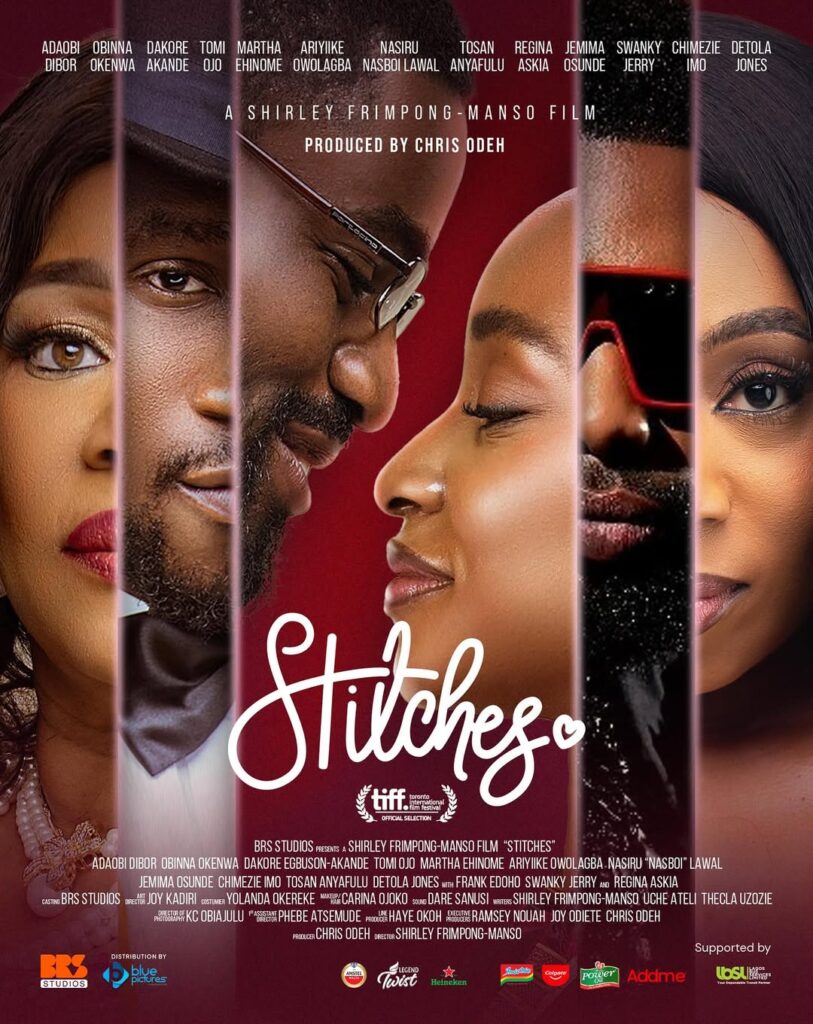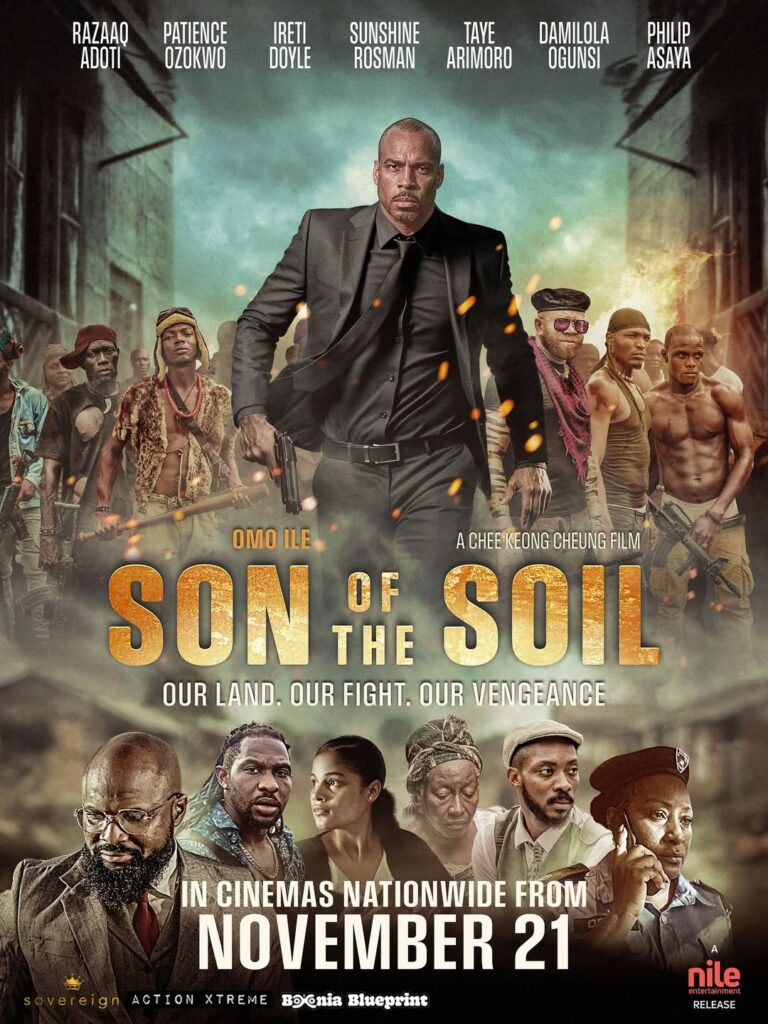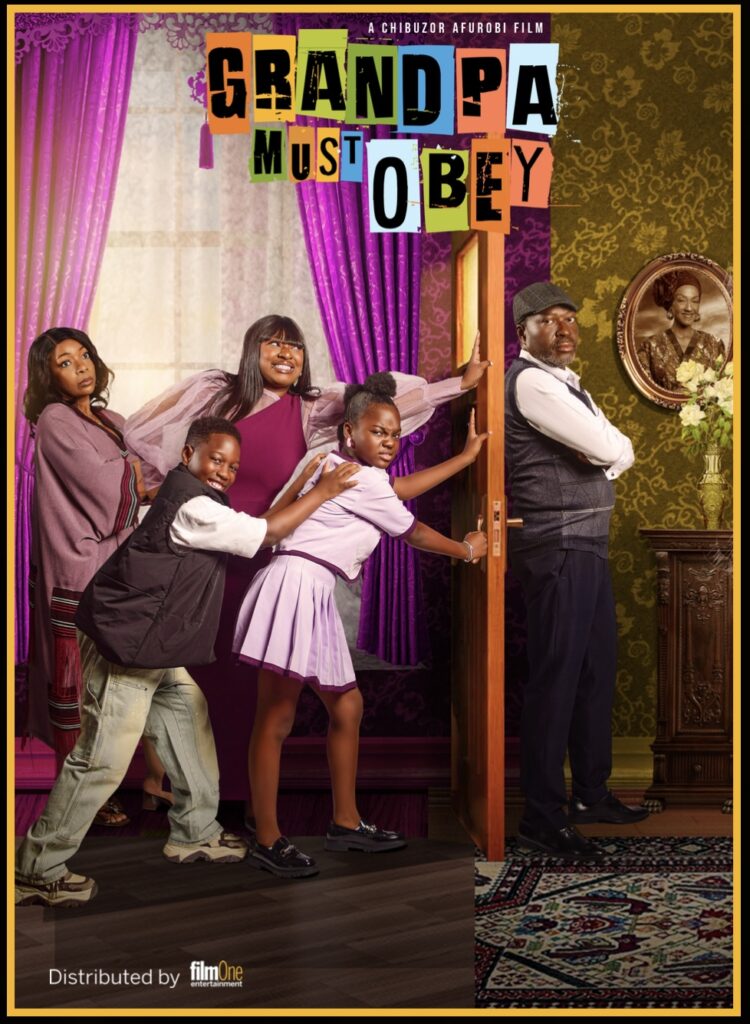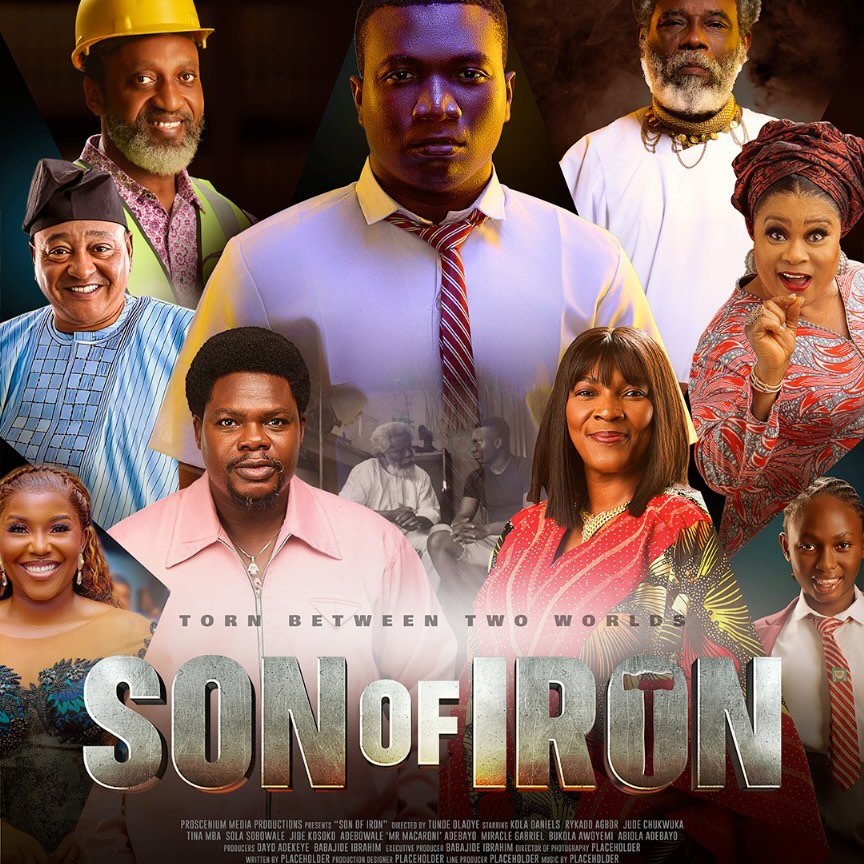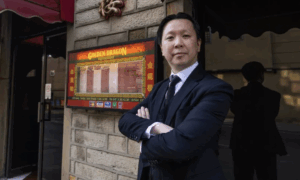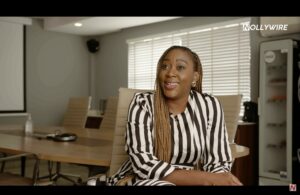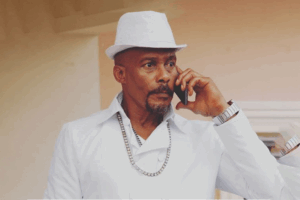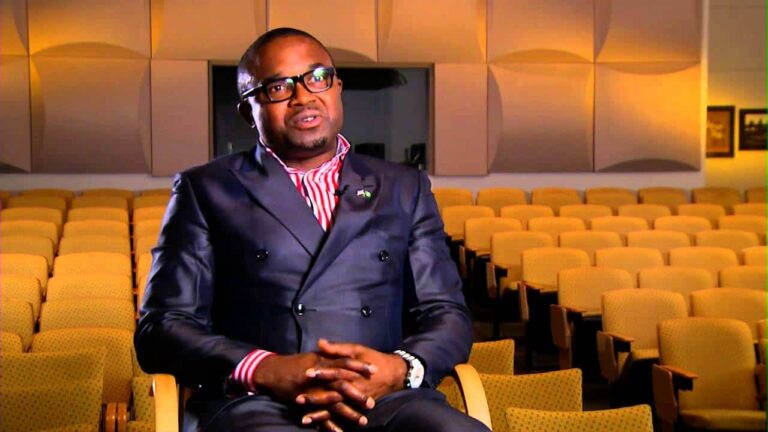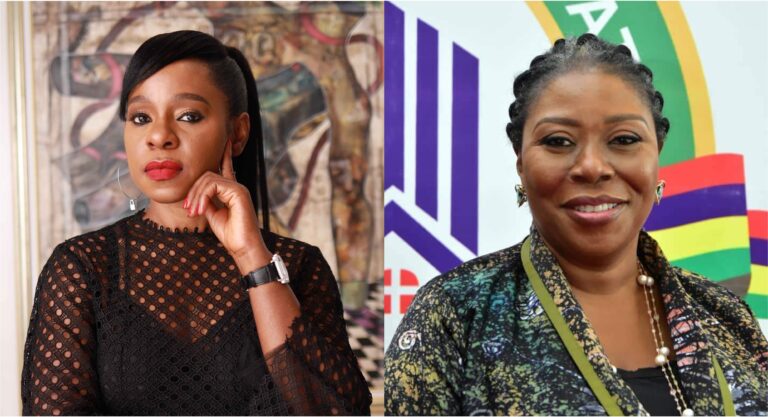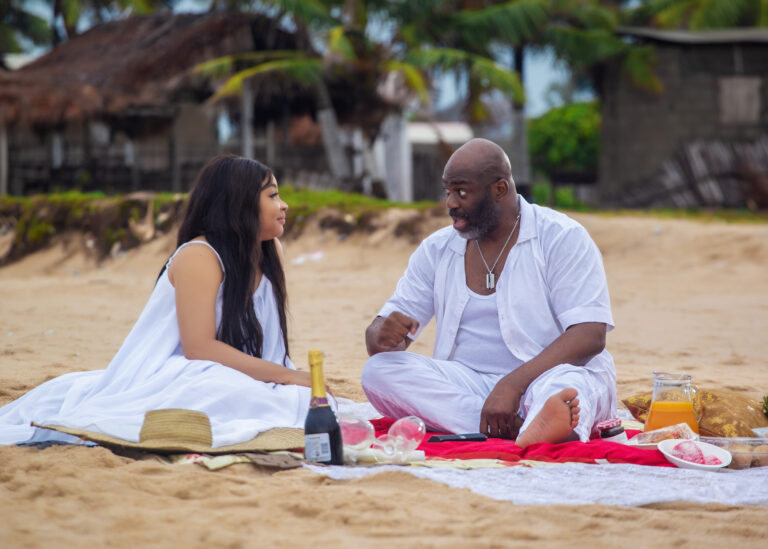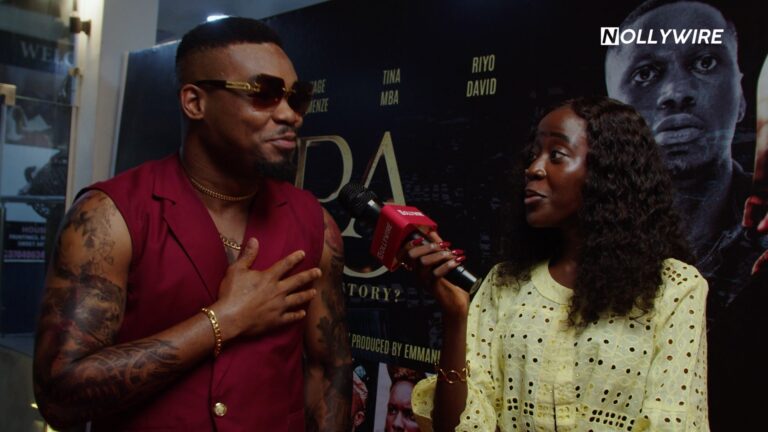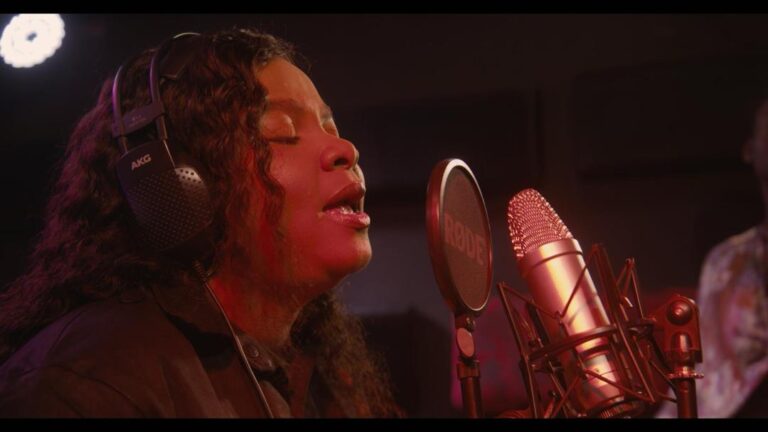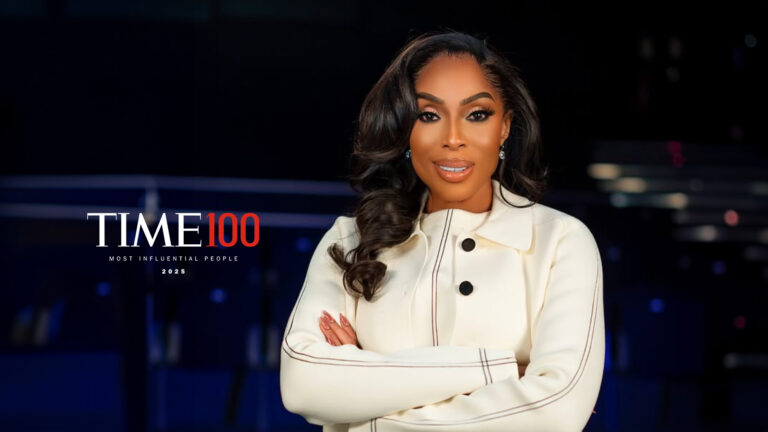Unlike many filmmakers, film was not Bartholomew Emordi’s first love; it was sound and it drew him to music. “I have always been amazed by how sounds come together,” the sound engineer tells me. This sound led him to music production software during his time in university and then came his experimenting years.
Emordi initially started producing music, later pivoting into audio engineering. He’s since built a dual career in music and film, mixing and mastering tracks while also designing immersive soundscapes for the screen. He earned a Dolby Atmos Mixing Engineer certificate in 2023 from the Engineers School of Music in California, in partnership with Dolby Labs. “I do audio engineering for both music and film,” he says. “Sometimes even for documentaries, which still fall under film.”
His official entry into Nollywood came with ‘Obara’M’, where he worked as one of the sound designers, handled the final mix, and played a key role in producing and mastering the soundtrack. He has since gone on to design the soundscape for music ‘Muri& ko’, ‘Something Like Gold’, ‘Love, Lust & Other Things’, the upcoming ‘Owambe Thieves’ amongst a premium lineup. Before that, he had gained early experience as a sound recordist on smaller productions, assisting during post as he sharpened his skills. But ‘Obara’M’ marked the moment his work officially joined the heartbeat of Nigerian cinema.
From music production beginnings to crafting atmospheres that speak louder than dialogue, Bartholomew Emordi gives us a look into the invisible art of film sound.
Sound is often described as the invisible force of storytelling. Have you ever manipulated sound in a way that changed the emotional impact of a scene—something the audience might not even realise but that deeply shaped how they connected with it?
Yes, definitely. One project that stands out is ‘Water Girl’, a supernatural drama I worked on last year. I handled both the sound design and the Dolby Atmos mix. When I received the raw files, the audio was quite flat, but by the time I was done with the sound design, it felt like an entirely different film.
That film relied heavily on mood and myth, and the sound played a huge role in establishing that atmosphere. From subtle ambient layers to dynamic effects, everything was crafted to pull the audience deeper into the world. I’m confident the sound helped elevate the storytelling in a way that viewers might not consciously recognise but would definitely feel. And it paid off—’Water Girl’ has been doing really well in the festival circuit and has picked up multiple awards, especially for technical categories.
Another example is ‘Obara’M’. It’s a music-based film, so the emotional weight rests heavily on the score and sound design. I was deeply involved in producing and mixing the music, making sure it aligned seamlessly with the visuals. That kind of emotional syncing—where music meets story—can make or break a scene. In ‘Obara’M’, I believe we got it right.
Did you personally choose the music for ‘Obara’M’?
I worked closely with the team in selecting and producing the music, and I handled all the mixing and mastering. I was also responsible for blending the music into the scenes and adding sound effects that heightened the drama or emotion.
What I aimed for was emotional authenticity—making sure that what you hear draws you into what the characters are feeling. That required careful balancing and a lot of trial and error. It wasn’t just about choosing a good song; it was about ensuring the music served the story. And I think that’s what made it resonate with audiences.
Silence can be as powerful as sound. How do you decide when a scene should be stripped of sound versus layered with detail?
It really depends on the story and the director’s vision. But beyond that, it’s also an instinct—a gut feeling you develop the more you work in sound. Sometimes silence says more than any sound effect or music ever could. It can amplify tension, create intimacy, or let the emotion in a scene breathe.
I always pay close attention to the rhythm of a film. If the scene already carries emotional weight through performance or visuals, sound might actually get in the way. On the other hand, a scene that’s visually simple might need sonic depth to elevate it. So it’s about balance and intuition. The more you immerse yourself in films, the better you become at sensing when to step back and let the silence speak.
Can you give an example where you had to choose silence over sound in a scene?
Yes, there are a few standout moments where that decision made all the difference. In ‘Obara’M’, there’s a funeral scene where the characters sing in memory of someone who passed. It was emotional, but something about the music felt off. I realised the instruments were overpowering the raw emotion of the vocals—especially from the child actress Darasimi, who sang with so much depth.
So I took a risk. I stripped away all the instruments and left only the vocals. The silence around their voices created this haunting, deeply moving moment. Everyone in the room knew it was the right call. It made the grief feel palpable.
Another example is from ‘Owambe Thieves’, which is yet to be released. There’s a climactic scene where I had built up layers of sound, but at the key moment, I cut everything—no effects, no music. That silence hit like a punch. It created a feeling of shock and loss that couldn’t have been achieved with any sound effect.
A third example comes from a short film currently on the festival circuit. There’s a scene where a young girl loses her mother. Again, I knew nothing else needed to be there. Silence was the only way to honour the gravity of that moment.
Nigerian cinema has a distinct sonic identity—from the chaos of Lagos traffic to hawker calls and local ambiance. How do you decide what to preserve versus what to modernise in your sound design?
That’s a great question. I think the key is to respect the authenticity of the environment while ensuring the sound is clean and immersive. For instance, in a Lagos market or street scene, I try not to strip away that natural identity. But raw location audio can be messy, so I often replace it with cleaner, more controlled recordings.
Sometimes I’ll use my own field recordings—I’ve gone out to record danfo engines, hawker calls, shoemakers, and even the clinking of street food plates. Other times, I blend location sounds with well-curated libraries that preserve that “Lagos feel” but with higher fidelity. It’s not about erasing the chaos; it’s about shaping it so it serves the story without distracting the viewer.
With Nollywood aiming for more international recognition, do you worry that we might lose our authentic sound?
Honestly, no. Nigerian filmmakers are very proud of our culture, and I don’t see them compromising that, even in the push for global appeal. If anything, I think we’re learning how to present our stories with more technical polish while still preserving their roots.
We want international audiences to appreciate our uniqueness, not mistake us for something else. And sound plays a huge role in that. Whether it’s the hum of a generator or the cadence of a market chant, those are things that define our sonic identity. I believe we’re getting better at celebrating that, not hiding it.
What is the most unique Nigerian sound you’ve ever recorded, and where did you find it?
I was about to go eat in a buka and thought of recording the sound of everything in there. from me ordering my food to paying for it via POS inside and then recording a real Nigerian buka ambience filled with conversations and chaos, lol. I ended up using it for a short film sound design a few weeks later.
What’s the strangest or most unexpected sound you’ve ever used in a film?
That would be using my voice for a character and having to play it back while editing. I don’t like hearing my own voice
What is the most exciting technological advancement in sound design that you feel Nollywood isn’t using enough?
That’s definitely ADR—Automated Dialogue Replacement. It’s such a powerful tool, and I don’t think Nollywood is using it nearly enough. ADR is where actors re-record their dialogue in a studio setting after filming, especially if the original on-set audio was compromised by noise. When done right, the viewer never knows the difference. It can drastically improve dialogue clarity, especially in noisy environments.
But it’s often overlooked here due to three main factors: budget, time, and awareness. A lot of productions are on tight budgets and would rather save that money for another area. Time is another issue—films are often rushed in post, and sound is usually expected to be done in a week or less. That’s just not enough time for proper ADR. And finally, not everyone understands its importance. Directors, producers, and even some editors don’t always realise how much ADR can elevate the final product. It’s not just “fixing it in post”—it’s about intentional, high-quality storytelling.
Do you have a favourite sound designer or a film whose sound design you really admire?
I don’t have one single favourite, honestly. There are so many incredible sound designers doing amazing work. What I usually do is watch a film, and if the sound design blows me away, I go straight to the end credits, look up the designer, and then research their process and past work. That curiosity keeps me learning.
That said, I really loved the sound design in ‘Arcane’. It’s incredibly detailed and immersive. I also recently watched ‘Thank You for Coming’, and I was really impressed with the sound in that as well. It’s not always about one person or one project—it’s about constantly being inspired by the craft.
If someone lost the ability to hear today, how would Bartholomew Emordi describe the magic of film sound to them?
Wow, that’s such a profound question. I’ll have to think deeply about that and get back to you. Sound is emotion, space, and atmosphere—it’s how a film breathes. Trying to translate that into words for someone who can’t hear anymore… that’s a real challenge. I would say it is an energy that is electrifying, something you feel deeply within.
If you could design the soundscape for a film that hasn’t been made yet, what story would you tell?
I would love to work on a coming-of-age story centred on a young boy navigating life in Nigeria. It would explore the transition from childhood innocence to the complexities of adulthood—dealing with responsibility, loss, identity, and resilience. It would be very grounded, very human.
In terms of sound, it would be super naturalistic. Think: football matches in the street, the rhythm of rain falling on rooftops, the distant chatter of neighbours, the sound of a ball hitting an iron gate. I would build a world through those small, intimate sounds—nothing overly produced, just textures that feel real and raw. The music would complement that—emotional but subtle. Every sonic detail would serve to immerse the audience in that boy’s world.

